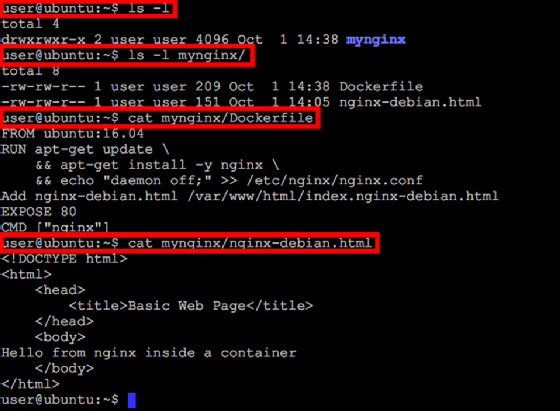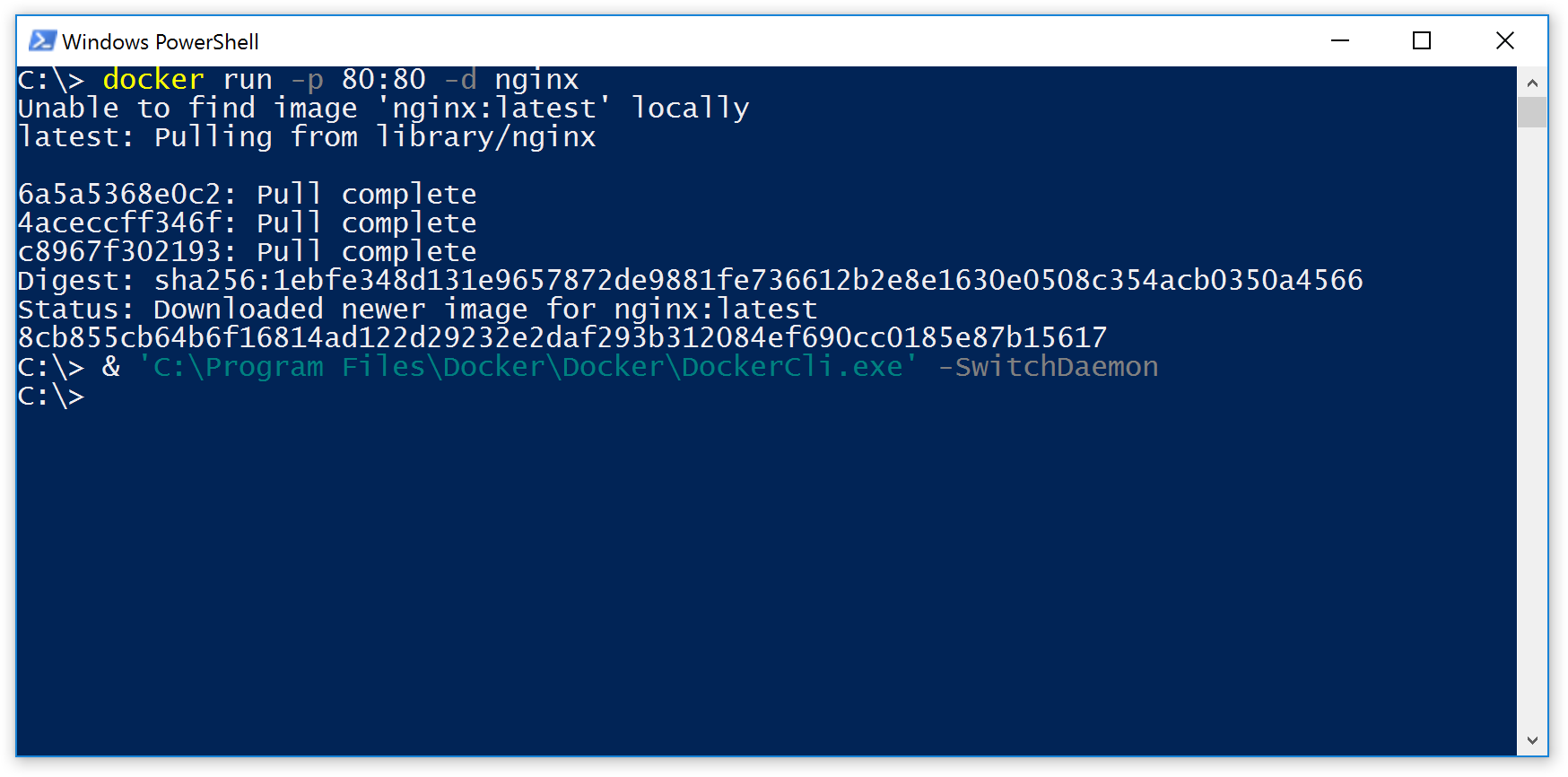

- #DOCKER RUN IMAGE FROM DOCKERFILE HOW TO#
- #DOCKER RUN IMAGE FROM DOCKERFILE FULL#
- #DOCKER RUN IMAGE FROM DOCKERFILE WINDOWS 10#
- #DOCKER RUN IMAGE FROM DOCKERFILE SOFTWARE#
- #DOCKER RUN IMAGE FROM DOCKERFILE CODE#
RUN powershell Import-Module WebAdministration RUN powershell Remove-Item c:/inetpub/wwwroot/iisstart.png -force RUN powershell Remove-Item c:/inetpub/wwwroot/iisstart.htm -force # Run the PowerShell commands to remove the default IIS files and create a new # Run some PowerShell commands within the new container to set up the image # Windows based container instead of Linux. # docker will only recognize forward slashes for file paths - since this is a # relative to the docker file location on your system. # files because docker already has the logic built-in to reference files and folders
#DOCKER RUN IMAGE FROM DOCKERFILE FULL#
You don't have to specify the full path to your local # Used to specify that you want to copy the WWWroot folder to the IIS inetpub WWWroot # Copies contents of the wwwroot folder to the inetpub/wwwroot folder in the new container image # to specify that you will pull the most recent image version available. # Microsoft and the application is IIS with the "latest" tag name being used # (shown as microsoft/iis:latest) so in our case the owner of the image is # Notice that the naming convention is "**owner/application name : tag name**" # Used to specify which base container image will be used by the build process. # Specifies that the latest microsoft/iis image will be used as the base image This puts the console’s current working directory to C:\Containers to default all downloads to this directory. Once the folder is created, change to that directory. To do so, open a Powershell or cmd terminal (you’ll be using PowerShell throughout this article) and create a new directory called C:\Containers. You’ll first need a folder to store all of the Docker images and containers you’ll be building from those images. Note: Be sure to enable Windows Containers Configuration when installing Docker. However feel free to use what ever IDE you’d prefer.
#DOCKER RUN IMAGE FROM DOCKERFILE CODE#
#DOCKER RUN IMAGE FROM DOCKERFILE HOW TO#
This article is a walkthrough on learning about learning how to build a Docker image using a Dockerfile.

You will have more control over what is installed in the container.You are able to rebuild a container image for several versions of Windows – which is great for testing code changes on several platforms.This process has several benefits over using a pre-built container image: In this article, you will learn how to create a Windows-based docker image from Dockerfile using a Windows container. The user can specify the base image and list of commands to be run when a container image is deployed or startup for the first time. Dockerfiles are simply text files that contain build instructions used by Docker to create a new container image that is based on an existing image. The docker build command can be leveraged to automate container image creation, adopt a container-as-code DevOps practice, and integrate containerization into the development cycle of your projects. Source: Docker Understanding Docker Build and Images As you can see below, unlike traditional virtual machines, the Docker engine runs on a layer between the host OS kernel and the isolated application services that are being containerized. Docker images have many benefits such as portability (applicable to multiple environments and platforms), customizable, and highly scalable.
#DOCKER RUN IMAGE FROM DOCKERFILE WINDOWS 10#
They have even added native support for images for Windows as a product feature in Windows 10 and Windows Server 2016!Ī Docker image is run on a container by using the Docker Engine. In response to the rise in Docker’s popularity, Microsoft has started to publicly support Docker images for several flagship products on their Docker Hub page. However, these days the usage of Docker container images has grown partly due to the popularity of micro-service architecture.
#DOCKER RUN IMAGE FROM DOCKERFILE SOFTWARE#
This methodology required more hardware and overhead to provision new machines for each software and OS specification.


 0 kommentar(er)
0 kommentar(er)
